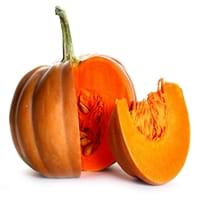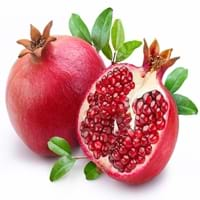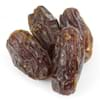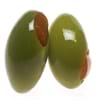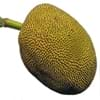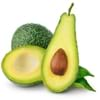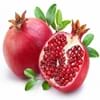Health Benefits
Arthritis treatment, Cancer prevention, High Cholesterol Regulation, Lower blood pressure, Helps Prevent cataract, Prevents gall stones, Ulcer treatment, Weight loss properties
Cancer prevention, Heart care, Helps in cartilage regeneration, Improves stomach health, Increase in haemoglobin, Increases metabolic rate, Prevents constipation
General Benefits
Boosts respiratory health, Eliminate parasites and infections, Protects against birth defects, Strengthens bones
Boosts immune system, Controls blood pressure, Controls blood sugar levels, Digestive aid, Maintains healthy cholesterol level
Skin Benefits
Heals sunburn, Hydrates skin, Skin rejuvenation
Anti-aging benefits, Skin rejuvenation, Treatment of acne
Hair Benefits
Regulates hair growth
Prevents hair loss, Promotes longer and healthier hair, Treatment of dandruff
Allergy Symptoms
Abdominal cramps, Anaphylaxis, Digestive Problems, Dizziness, Eczema, Fainting, Hives, Inflammation, Itching, Tingling sensation in wrist and face, Vomiting, Wheezing
Abdominal pains, Anaphylaxis, Itching
Side Effects
Kidney and gallbladder diseases
Allergic reaction, Cold, Breathing difficulty, Irritation, Swelling
Best Time to Eat
Along with meal, Don't eat after meal, Morning time (before lunch)
Best if taken as a breakfast (or empty stomach), As a snack in the late afternoon, Eat the fresh ones, avoid mixing with any other foods, don't eat after meal., Morning time (before lunch)
Vitamin B5 (Pantothenic Acid)
Vitamin C (Ascorbic Acid)
Vitamin K (Phyllochinone)
Phytosterol
Not Available
Calories in Fresh Fruit with Peel
Not Available
Calories in Fresh Fruit without Peel
Calories in Frozen Form
Not Available
Not Available
Calories in Dried Form
Not Available
Calories in Canned Form
Not Available
Season
All seasons
Autumn
Varieties
Jarrahdale, Peanut, Lakota, Cow, Sugar, Caribean, Red kuri, Buttercup and Pink lady
Balegal, Crab, Cloud, Francis, Freshman and Granada
Color
Blue, Green, Orange, Red, White
Dark red, Light pink-red
Inside Color
Creamy Yellow
Red
Taste
Creamy, Soft, Sweet
Juicy, Sweet
Origin
Mexico
India, Iran
Soil Type
Clay loam, Sandy loam, Well-drained
Clay, Sand
Climatic Conditions
Warm to hot climate
Cold, Dry, Hot
Facts about
- The name pumpkin has its roots in the Greek word ‘pepon’, meaning ‘large melon’.
- The largest pumpkin ever grown weighed 1,140 pounds.
- Pumpkins were once known for removing freckles & curing snake bites.
- Pomegranate means apple with many seeds.
- It was called as the “apple of Grenada” in early English.
- In Hinduism, this fruit symbolizes prosperity and fertility.
- Pomegranate trees can live upto 200 years.
Other Countries
Egypt, India, Indonesia, Iran, Italy, Mexico, Russia, Spain, United States of America
Africa, India, Middle east, Pakistan
Top Importer
United States of America
Europe
Botanical Name
Cucurbita maxima
Punica granatum
Synonym
Cucurbita pepo, Squash
Punica malus
Subkingdom
Tracheobionta
Tracheobionta
Division
Magnoliophyta
Magnoliophyta
Class
Magnoliopsida
Magnoliopsida
Subclass
Dillenhidae
Rosidae
Order
Cucurbitales
Myrtales
Family
Cucurbitaceae
Lythraceae
Species
Cucurbita mixta
P. granatum
Generic Group
Not Available
Pomegranate
Difference Between Pumpkin and Pomegranate
We might think that Pumpkin and Pomegranate are similar with respect to nutritional value and health benefits. But the nutrient content of both fruits is different. Pumpkin and Pomegranate Facts such as their taste, shape, color, and size are also distinct. The difference between Pumpkin and Pomegranate is explained here.
The amount of calories in 100 gm of fresh Pumpkin and Pomegranate with peel is 26.00 kcal and Not Available and the amount of calories without peel is 30.00 kcal and 83.00 kcal respectively. Thus, Pumpkin and Pomegranate belong to and category.These fruits might or might not differ with respect to their scientific classification. The order of Pumpkin and Pomegranate is Cucurbitales and Myrtales respectively. Pumpkin belongs to Cucurbitaceae family and Pomegranate belongs to Lythraceae family. Pumpkin belongs to Cucurbita genus of Cucurbita mixta species and Pomegranate belongs to Punica genus of P. granatum species. Beings plants, both fruits belong to Plantae Kingdom.
